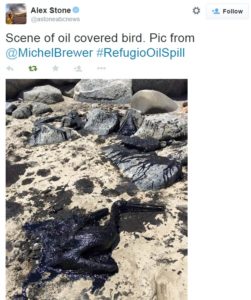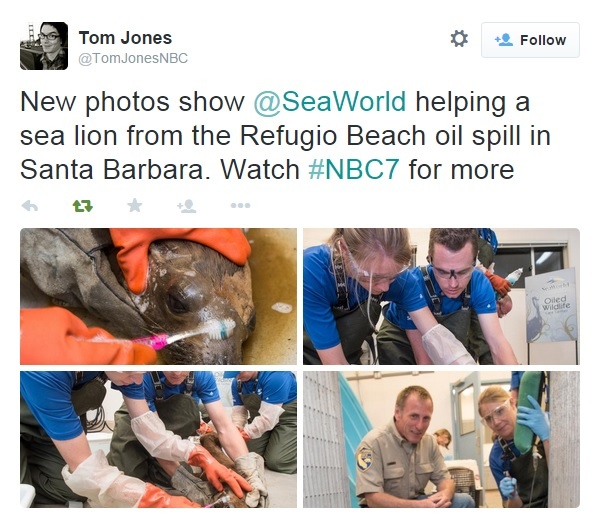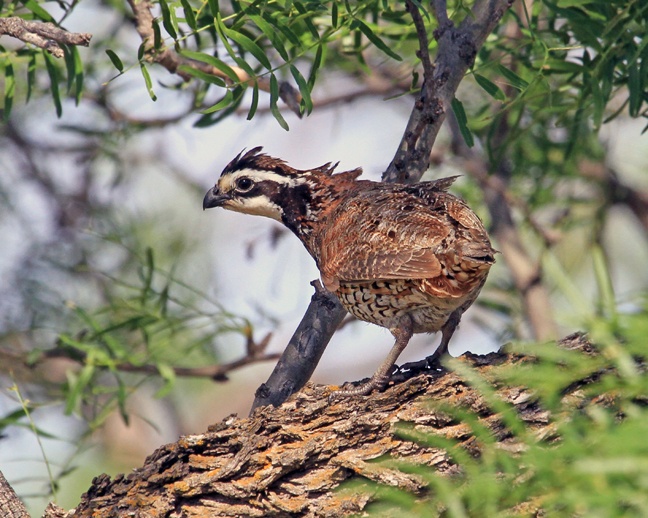We have much more to do and your continued support is needed now more than ever.
Oil Pipeline Rupture Soaks Santa Barbara Beaches (Updated with New Photos)
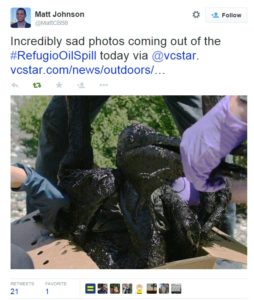 From oil train explosions to pipeline ruptures, not a month goes by without a reminder of the high cost of our ongoing addiction to oil, and this morning we’re waking up to a new disaster in California. As Matt Hamilton and Javier Panzar report for the Los Angeles Times, an oil pipeline break has spilled an estimated 105,000 gallons of crude oil along the Pacific Ocean several miles west of Santa Barbara, jeopardizing local wildlife:
From oil train explosions to pipeline ruptures, not a month goes by without a reminder of the high cost of our ongoing addiction to oil, and this morning we’re waking up to a new disaster in California. As Matt Hamilton and Javier Panzar report for the Los Angeles Times, an oil pipeline break has spilled an estimated 105,000 gallons of crude oil along the Pacific Ocean several miles west of Santa Barbara, jeopardizing local wildlife:
After flowing from the pipeline, crude pooled in a culvert before spilling into the Pacific, where it created a four-mile-long sheen extending about 50 yards into the water. Officials said winds could send the oil another four miles south toward Isla Vista.
The pipeline, built in 1991 and designed to carry about 150,000 barrels of oil per day, is owned by Houston-based Plains All American Pipeline, which said in a statement that it shut down the pipe. The culvert was also blocked to prevent more oil from flowing into the ocean, the company said.
By late Tuesday, a thick layer of crude had begun to wash ashore, with black tar smearing the rocks as the brackish tides arrived.
“It is horrible,” said Brett Connors, 35, a producer from Santa Monica who said he spotted sea lions swimming in the oil slick. “You want to jump in there and save them.”
“It’s devastating to see an oil spill in such an important area for wildlife,” says Beth Pratt, director of National Wildlife Federation’s California Regional Center. “Known as the ‘Galapagos of North America’ this region is home to an array of rich marine life including sea lions, shorebirds, and migrating whales that officials have been using helicopters to attempt to herd out of the spill zone.”
If you see oiled wildlife, call the Oiled Wildlife Care Network at (877) 823-6926. Here’s video of the oil sludge from Lara Cooper of Noozhawk.com:
[vimeo]https://vimeo.com/128316041[/vimeo]
The spill is having an immediate impact on the local economy as fishermen and tourists are being told to keep away from the water:
Refugio State Beach and area fisheries were closed, and a warning was posted at El Capitan State Beach, according to county emergency officials.
At the beach in Goleta, construction workers Josh Marsh and Morgan Miller wore rubber boots and carried buckets to help clean up the area. Both were awestruck by the now-polluted coast, which had the benzene-laced odors of a gas station.
“I’m a surfer, I’m a fisherman — I like sitting out here and breathing it in,” said Marsh, 45. “To see it like this, to see it destroyed — it hurts.“
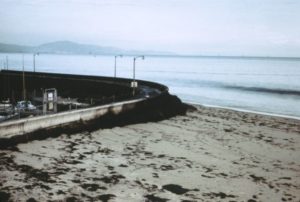
As the National Wildlife Federation has reported before, oil disasters aren’t rare – they’re tragically common. The big incidents make headlines, from the Gulf oil disaster to Michigan’s Kalamazoo River pipeline rupture. But from tanker leaks to smaller seeps, the cost of our addiction to oil, whether imported or domestically drilled, is felt in communities and by fish and wildlife across the country, every single day. The only way to end the danger is by ending our use of dirty fuels as quickly as possible and transitioning to clean energy.
NWF’s California Regional Center is continuing to monitor the spill and cleanup and we’ll keep you updated on wildlife impacts.
UPDATE 5/20 3:29pm ET: The slick now covers nine miles of coastline. The 21,000 gallon estimate seems on the low side.
UPDATE 5/20 8:18pm ET: The spill estimate has been quintupled to 105,000 gallons. Frustratingly, the Los Angeles Times reports residents are finding oiled wildlife but getting no response to calls for help.
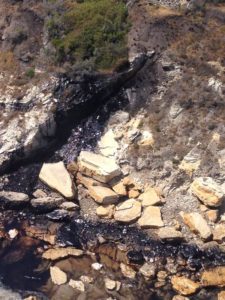
Time and time again in recent years, we see the same story play out when there’s an oil spill: vastly underestimated quantities, inadequate wildlife response, histories of insufficient inspections and other safety questions, and a staggering lack of transparency. Today the exact same story is unfolding along the beaches of beautiful Santa Barbara, California. Everyone knows about the Gulf oil disaster and BP’s gross negligence that led to it, but just within the last five years, we’ve also seen major oil pipeline ruptures in Michigan, Montana, Arkansas and North Dakota, along with a long list of train incidents. It’s alarming that our aging and expanding oil infrastructure is so poorly maintained and regulated that it continually puts wildlife and communities at serious risk.
Right now, we need Plains All American Pipeline and government officials to immediately ramp up wildlife rescue efforts and level with all Californians about the severity of spill in Santa Barbara. It’s outrageous to hear from the L.A. Times that the pipeline had not been inspected in more than three years and that right now local residents are receiving no response when they call to report oiled wildlife. And this is not the first time that Santa Barbara’s coastline has been struck by oil. In 1969 when a massive well drilling blow-out at an offshore platform spilled more than four million gallons of crude oil across 200 square miles of ocean and 35 miles of coastline were oiled, killing thousands of animals.
Across our country, we need an honest national conversation about pipeline safety and risks to communities and wildlife. We have too many corroding and failing pipelines that are more than half a century old and rarely inspected or repaired, like Enbridge’s 70-year old pipeline that threatens the Great Lakes. We have new projects, like Keystone and Portland-Montreal, proposed to transect critical natural resources and wildlife habitat. Promises from industry and government officials about community safety and rigorous oversight are too often hollow. Americans and America’s wildlife deserve better.
UPDATE 5/21 3:52pm ET: While experience from previous oil spills tells us most wildlife victims will never be found, we’re seeing some images of oiled wildlife start to come in:
UPDATE 5/22 10:41am ET: An oiled sea lion has been rescued and is being treated at SeaWorld in San Diego:

